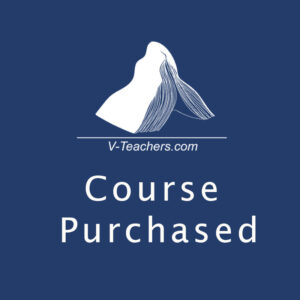Principles of Mathematics, Academic
Course Specifications
Course Title: Principles of Mathematics, Grade 10, Academic
Ministry Course Code: MPM2D
Prerequisite: Principles of Mathematics, Grade 9, Academic (MFM1D)
Credit Value: 1.0
Curriculum Guideline Source: The Ontario Curriculum Grades 9 and 10, Mathematics, 2005 (revised)
Department: Mathematics
Course Description
This course enables students to broaden their understanding of relationships and extend their problem-solving and algebraic skills through investigation, the effective use of technology, and abstract reasoning. Students will explore quadratic relations and their applications; solve and apply linear systems; verify properties of geometric figures using analytic geometry; and investigate the trigonometry of right and acute triangles. Students will reason mathematically and communicate their thinking as they solve multi-step problems.
$295.00
Ontario Secondary School Credit
Ontario Certified Teachers
Language of instruction: English
Regular Teacher Contact
Sequenced Lessons
Recorded Video Lessons
e-Resources
Mathematical process expectations. The mathematical processes are to be integrated into student learning in all areas of this course.
Problem Solving
● develop, select, apply, and compare a variety of problem-solving strategies as they pose and solve problems and conduct investigations, to help deepen their mathematical understanding;
Reasoning and Proving
● develop and apply reasoning skills (e.g., recognition of relationships, generalization through inductive reasoning, use of counter-examples) to make mathematical conjectures, assess conjectures, and justify conclusions, and plan and construct organized mathematical arguments;
Reflecting
● demonstrate that they are reflecting on and monitoring their thinking to help clarify their understanding as they complete an investigation or solve a problem (e.g., by assessing the effectiveness of strategies and processes used, by proposing alternative approaches, by judging the reasonableness of results, by verifying solutions);
Selecting Tools and Computational Strategies
● select and use a variety of concrete, visual, and electronic learning tools and appropriate computational strategies to investigate mathematical ideas and to solve problems;
Connecting
● make connections among mathematical concepts and procedures, and relate mathematical ideas to situations or phenomena drawn from other contexts (e.g., other curriculum areas, daily life, current events, art and culture, sports);
Representing
● create a variety of representations of mathematical ideas (e.g., numeric, geometric, algebraic, graphical, pictorial representations; onscreen dynamic representations), connect and compare them, and select and apply the appropriate representations to solve problems;
Communicating
● communicate mathematical thinking orally, visually, and in writing, using mathematical vocabulary and a variety of appropriate representations, and observing mathematical conventions.
Course Outline
| Unit 1 | Number Sense and Algebra | 40 hours |
| Unit 2 | Linear Relations | 13 hours |
| Unit 3 | Analytic Geometry | 40 hours |
| Unit 4 | Measurement and Geometry | 17 hours |
| Total | 110 hours |

